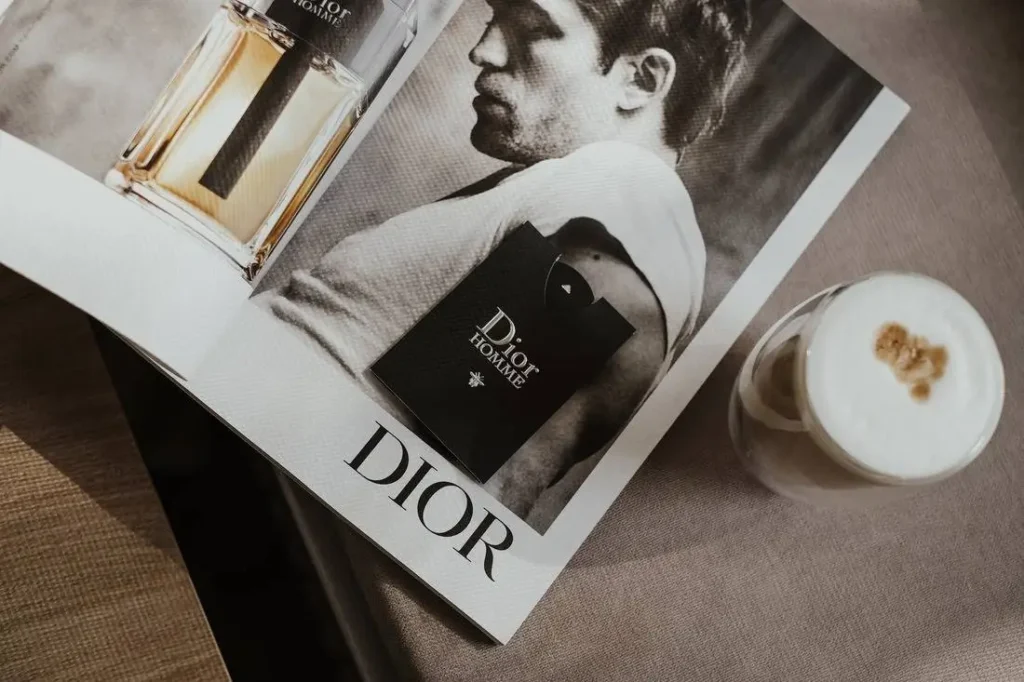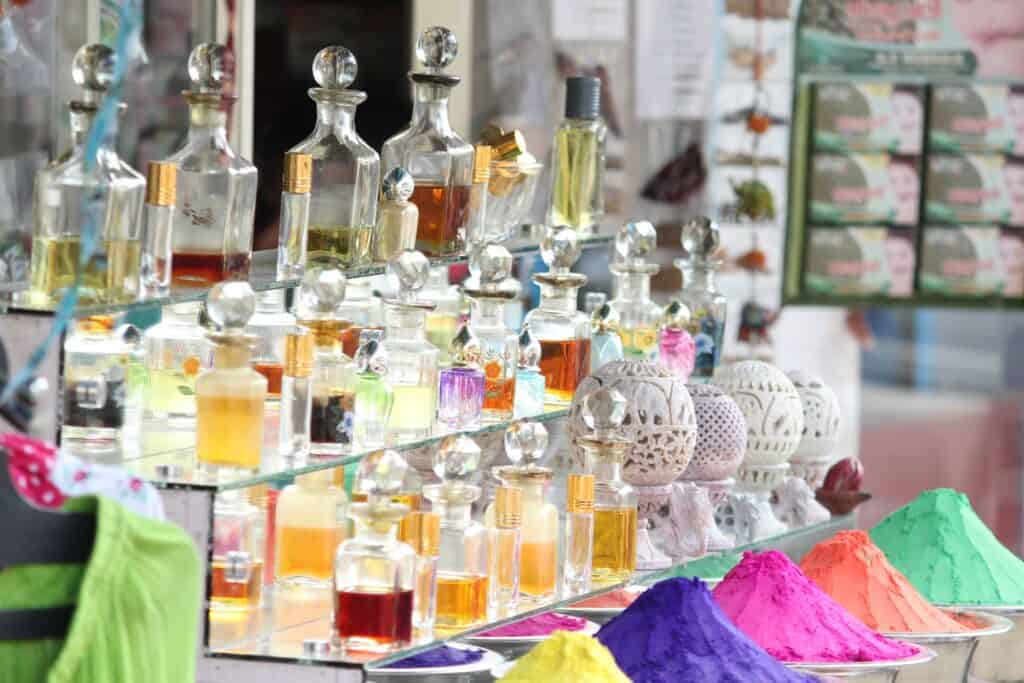Have you had one of those Oriflame catalogues, where the pages advertise a perfume with ‘Rub me and try the scent’? I was always curious to know how they get the scent in that particular part, but not anywhere else on the page, and the scent only releases when you rub or scratch it. How?
So I did research about it a bit and found the answer.
Companies like Oriflame use technologies like scented ink and microencapsulation to advertise perfume in their catalogues. They customise ink with the scent of the perfume and encase it in micro-sized capsules which gives out controlled release of scent when rubbed.
What is Scented Ink?
Scented ink, also known as ‘Rub and Sniff’ paper ink, is often used for marketing scented products and has to be custom-made for the company or a particular product. This can be done through different manufacturers that specialise in scented ink manufacturing.
While this type of ink doesn’t require a specialised printer to print, it is not just a regular ink with fragrance added to it. These inks are chemically engineered and use encapsulation technology.
Apart from perfume advertising, scented ink is also used for advertising other products like bodycream, or even tea. I also remember having pens with scented ink that me and my friends used to love to write with, I am not sure if they are the same but those pens were quite cheap.
What is Microencapsulation?
Microencapsulation is the technique through which manufacturers confine micro-sized particles of solids or liquids- scented ink in this case – in an inert shell or capsule.
The scented ink inside the capsule is protected from the external environment and also helps with the controlled release of the particles inside the capsule, which is why scent is only released when you rub the ink on the page.
Why Do The Perfume Industry Use This Type of Advertising?

Scented ads might have become super popular back in the 80s, but my experience is mostly associated with the catalogues of Oriflame that my friends showed me. In short, they use this type of marketing because scent is one of the most powerful senses, and it works.
Scent advertising or commercials, in general, have always been deemed weird, or sometimes interesting by the ones who understand the emotions behind it. But one of the reasons why these commercials are deemed weird is because these commercials try to depict a picture of the scent that consumers will experience once they spray or wear it.
Don’t get me wrong. I enjoy a hot Italian man, or Chris Evans featuring on a scent ad. But even with Robert Pattinson, hot Chris Evans or beautiful Emilia Clarke, perfume commercials cannot get to the point, or convey to us what the perfume actually smells like. Not even words of reviews will do that for you.
But scented prints do help in conveying what the scent will smell like when you wear it. This ‘Rub and Sniff’ might not be super accurate and doesn’t exactly help you in wearing the scent for the day, but it does a good job of advertising this scent to you.
Scented print ads don’t just act as a sampling strip for consumers to try out the scent before buying. This also gives consumers an experience of the brand, and evoke emotional response as they go through the products and have a long-lasting impression or experience.
This is often done by many stores, where they often report receiving an increased number of customers after they start scenting their store.
History of Scented Print Advertising
Eugene Rimmel, a British perfumer and businessman, was the first one to have used scented print advertising for his perfumes in the mid-1800s. As an exceptional businessman, he also started promoting them through mail-order catalogues, which was the first kind of scented print advertising.
He also used theatres in London to promote his perfumes for his scented ad programs. But unfortunately, people who had to smell this scent just by coming to watch a play weren’t fond of this idea. Because you can NOT watch a film, and you can NOT listen to music, but what choice do you have to NOT smell when you are going to a theatre?
The same was the case with ads from Giorgio Beverly Hills, started by Fred Hayman and Gale Hayman. Their perfume marketing campaign included mailing perfume-soaked blotters to local clients at first. However, after finding a cheaper method for a national campaign, they used ScentStrip Sampler from Arcade Marketing.
A scent strip or scented insert is a folded piece of paper strip which is held together by glue. Once you open the folded paper and the glue breaks, the scent is released for you. These are also called magazine inserts. If you are wondering about the step-by-step process of how they do it, this PDF can help.
While they successfully marketed their scent, Giorgio, in aspects that their sales were increasing, they also faced criticism from the readers of the magazine since it reeked of their scent. And while their perfume was super popular, bashing their brand for their annoying ads was common too.
But don’t think that these scent print ads, or the technology itself has been used only for scented product marketing. In fact, movies, video games, music albums, books, and even scientific journals used this technology throughout the years for their own purposes.
Future of Scent Advertising: Can Digital Technology Do It?
It’s been decades now that a technology that will help us smell through our computer screen has been long awaited, imagined and fantasized. So, is there such a technology?
Indeed there has been some related research. Especially with the advancements of virtual reality, which is focused on giving an experience that includes all senses, they cannot just leave out smell, right?
‘Digital smell’ technology is an idea that researchers in Malaysia are working on, but it is still in the preliminary stage. While I don’t have much information about the advancement of this research, I am sure there will be such a technology sooner than later.
Takeaway
Scented marketing of perfumes is definitely a super cool marketing method. I have myself found very drawn to this scent called So Fever Her from Oriflame after smelling it on one of its catalogues, and I still remember how good it smelt.

